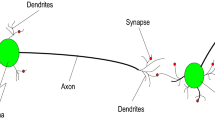Abstract
Time performance is one of the most important aspects to be benchmarked in project management. Many factors arise during the project implementation process affecting the project time. Identifying the problems that are significant to executing construction schedule and incorporating them into a comprehensive model will be useful in project management. Based on a data set of 70 projects (outliers discarded), the multiple regression technique is applied to integrate significant variables into a model used to predict or evaluate the project time index. The result suggests that six variables, namely underground site condition, project management works, estimating works, competency of subcontractor(s), accuracy and completeness of design, and owner’s project financing emerged as important factors in regression model. The constructed regression model has a good performance when compared with an artificial neural network model developed for purpose of cross validation.
Similar content being viewed by others
References
Ahmed, T. N., Ruwanpura, J. Y., and Clark, R. (2005). Predicting schedule and cost elements’ variation for EPC projects in Alberta, Construction Research Congress (ASCE).
Al-Momani, A. H. (2000). “Construction delay: A quantitative analysis.” International Journal of Project Management, Vol. 18, No. 1, pp. 51–59.
Bromilow, F. J. (1974). “Measurement and scheduling of construction time and cost performance in the building industry.” The Chartered Builder, Vol. 10, No. 9, pp. 79–82.
Bromilow, F. J., Hinds, M. F., and Moody, N. F. (1980). “AIQS survey of building contract time performance.” Building Economist, Vol. 19, No. 2, pp. 79–82.
Bromilow, F. J., Hinds, M. F., and Moody, N. F. (1988). The time and cost performance of building contracts 1976–1986, The Australian Institute of Quantity Surveyors, Sydney.
Boussabaine, A. H. (1996). “The use of artificial neural networks in construction management: A review.” Construction Management and Economics, Vol. 14, No. 5, pp. 427–436.
Chan, A. P. C. (1999). “Modeling building durations in Hong Kong.” Construction Management and Economics, Vol. 17, No. 2, pp. 189–196.
Chan, A. P. C. (2001). “Time-cost relationship of public sector projects in Malaysia.” International Journal of Project Management, Vol. 19, No. 4, pp. 223–229.
Chan, A. P. C. and Chan, D. W. M. (2004). “Developing a benchmarking model for project construction time performance in Hong Kong.” Building and Environment, Vol. 39, No. 3, pp. 339–349.
Chan, D. W. M. and Kumaraswamy, M. M. (1995). “A study of the factors affecting construction durations in Hong Kong.” Construction Management and Economics, Vol. 13, No. 4, pp. 319–333.
Chan, D. W. M. and Kumaraswamy, M. M. (1999a). “Forecasting construction duration for public housing projects: a Hong Kong perspective.” Building and Environment, Vol. 34, No. 5, pp. 633–646.
Chan, D. W. M. and Kumaraswamy, M. M. (1999b). “Modelling and predicting construction durations in Hong Kong public housing.” Construction Management and Economics, Vol. 17, No. 3, pp. 351–362.
Chan, A. P. C. and Yeong, C. M. (1995). “A comparison of strategies for reducing variations.” Construction Management and Economics Vol. 13, No. 6, pp. 467–473
Chan, D. W. M. and Kumaraswamy, M. M. (2002). “Compressing construction durations: Lessons learned from Hong Kong building projects.” International Journal of Project Management, Vol. 20, No. 1, pp. 23–35.
Chen, W. T. and Huang, Y. H. (2006). “Approximately predicting the cost and duration of school reconstruction projects in Taiwan.” Construction Management and Economics, Vol. 24, No. 12, pp. 1231–1239.
De Veaux, R. D., Velleman, P. F., and Bock, D. E. (2006). Intro stats, Second Edition, Pearson Education, Inc.
Dissanayaka, S. M. and Kumaraswamy, M. M. (1999). “Comparing contributors to time and cost performance in building projects.” Building and Environment, Vol. 34, No. 1, pp. 31–42.
Fortune, J. and White, D. (2006). “Framing of project critical success factors by a system model.” International Journal of Project Management, Vol. 24, No. 1, pp. 53–65.
Gould, S. J. (2005). Managing the construction process, Third Edition, Pearson Education, Inc., Upper Saddle River, New Jersey 07458.
Hegab, M. Y. and Smith, G. R. (2007). “Delay time analysis in microtunneling projects (Technical notes).” Journal of Construction Engineering and Management (ASCE), Vol. 133, No. 2, pp. 191–195.
Hoffman, G. J., Thal, A. E., Webb, T. S., and Weir, J. D. (2007). “Estimating performance time for construction projects.” Journal of Management in Engineering (ASCE), Vol. 23, No. 4, pp. 193–199.
Ireland, V. (1985). “The role of managerial actions in the cost, time and quality performance of high-rise commercial building projects.” Construction Management and Economics, Vol. 3, No. 4, pp. 59–87.
Kaka, A. P. and Price, A. D. F. (1991). “Relationship between value and duration of construction projects.” Construction Management and Economics, Vol. 9, No. 4, pp. 383–400.
Kenley, R. (2001). “The predictive ability of Bromilow’s time-cost model: A comment.” Construction Management and Economics, Vol. 19, No. 8, pp. 759–764.
Kim, G. H., An, S. H., and Kang, K. I. (2004). Comparison of construction cost estimating models based on regression analysis, neural networks, and case-based reasoning.” Building and Environment, Vol. 39, No. 10, pp. 1235–1242.
Kumaraswamy, M. M. and Chan, D. W. M. (1995). “Determinants of construction duration.” Construction Management and Economics, Vol. 13, No. 3, pp. 209–217.
Le-Hoai, L., Lee, Y. D., and Cho, J. W. (2009). “Construction of Time-Cost model for building projects in Vietnam.” Korea Journal of Construction Engineering and Management (KICEM), Vol. 10, No. 3, pp. 130–138.
Le-Hoai, L., Lee, Y. D, and Lee, J. Y. (2008). “Delay and cost overruns in vietnam large construction projects: A comparison with other selected countries.” KSCE Journal of Civil Engineering, Vol. 12, No. 6, pp. 367–377.
Long, N. D., Ogunlana, S., Quang, T., and Lam, K. C. (2004). “Large Construction Projects construction projects in developing countries: A case study Vietnam.” Int. J. Project Management, Vol. 22, No. 7, pp. 553–561.
Love, P. E. D., Tse, R. Y. C., and Edwards, D. J. (2005). “Time-cost relationships in Australian building construction projects.” Journal of Construction Engineering and Management, ASCE, Vol. 131, No. 2, pp. 187–194.
Lowe, D. J., Emsley, M. W., and Harding, A. (2006). “Predicting construction cost using multiple regression techniques.” Journal of Construction engineering and Management, ASCE, Vol. 132, No. 7, pp. 750–758.
Montgomery, D. C., Peck, E. A., and Vining, G. G. (2001). Introduction to linear regression analysis, Third edition. John Wiley&Sons, Inc.
Nkado, R. N. (1992). “Construction time information system for the building industry.” Construction Management and Economics, Vol. 10, No. 2, pp. 489–509.
Nkado, R. N. (1995). “Construction time-influencing factors: The contractor’s perspective.” Construction Management and Economics, Vol. 13, No. 1, pp. 81–89.
Ng, S. T., Mak, M. M. Y., Skitmore, R. M., Lam, K. C., and Varnam, M. (2001). “The predictive ability of Bromilow’s time-cost model.” Construction management and Economics, Vol. 19, No. 2, pp. 165–173.
Ogunsemi, D. R. and Jagboro, G. O. (2006). “Time-cost for building projects in Nigeria.” Construction Management and Economics, Vol. 24, No. 3, pp. 253–258.
Othman, A. A., Torrance, J. V., Hamid, M. A. (2006). “Factors influencing the construction time of civil engineering projects in Malaysia.” Engineering, Construction and Architectural Management, Vol. 13, No. 5, pp. 481–501.
Paliwal, M. and Kumar, U. A. (2009). “Neural networks and statistical techniques: A review of applications.” Expert Systems with Applications, Vol. 36, No. 1, pp. 2–17.
Proverbs, D. G., Holt, G. D., and Olomolaiye, P. O. (1999). “Factors impacting construction project duration: a comparison between France, Germany and the U.K.” Building and Environment, Vol. 34, No. 2, pp. 197–204.
Sidwell, A. C. (1984). “The time performance of construction projects.” Architectural Science Review, Vol. 27, pp. 85–91.
Skitmore, R. M. and Ng, S. T. (2003). “Forecast models for actual construction time and cost.” Building and Environment, Vol. 38, No. 8, pp. 1075–1083.
SPSS Inc. (2007). SPSS Neural Networks™ 16.0, SPSS Inc. South Wacker Drive, Chicago.
Stoy, C., Dreier, F., and Schalcher, H. R. (2007b). “Construction duration of residential building projects in Germany.” Engineering, Construction and Architectural Management, Vol. 14, No. 1, pp. 52–64.
Stoy, C., Pollalis, S., and Schalcher, H. R. (2007a). “Early estimation of building construction speed in Germany.” International Journal of Project Management, Vol. 25, No. 3, pp. 283–289.
Thomas, R., Maloney, W. F., Horner, M. W., Smith, G. R., Handa, V. K., and Sanders, S. R. (1990). “Modeling construction labor productivity.” Journal of Construction Engineering and Management, ASCE, Vol. 116, No. 4, pp. 705–726.
Trost, S. M. and Oberlender, G. D. (2003). “Predicting accuracy of early cost estimates using factor analysis and multivariate regression.” Journal of Construction Engineering and Management, ASCE, Vol. 129, No. 2, pp. 198–204.
Walker, D. H. T. (1995). “An investigation into construction time performance.” Construction Management and Economics, Vol. 13, No. 3, pp. 263–274.
Author information
Authors and Affiliations
Corresponding author
Rights and permissions
About this article
Cite this article
Le-Hoai, L., Lee, Y.D. & Nguyen, A.T. Estimating time performance for building construction projects in Vietnam. KSCE J Civ Eng 17, 1–8 (2013). https://doi.org/10.1007/s12205-013-0862-3
Received:
Revised:
Accepted:
Published:
Issue Date:
DOI: https://doi.org/10.1007/s12205-013-0862-3




